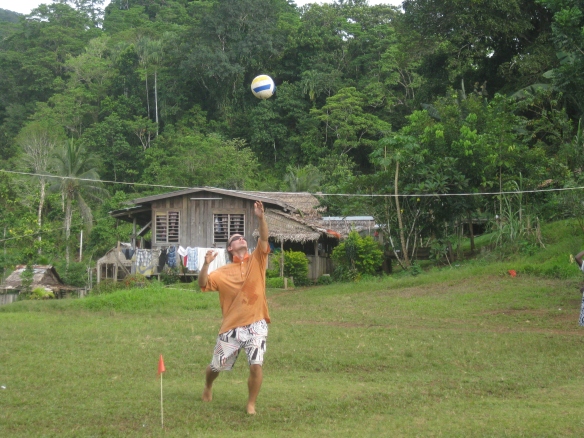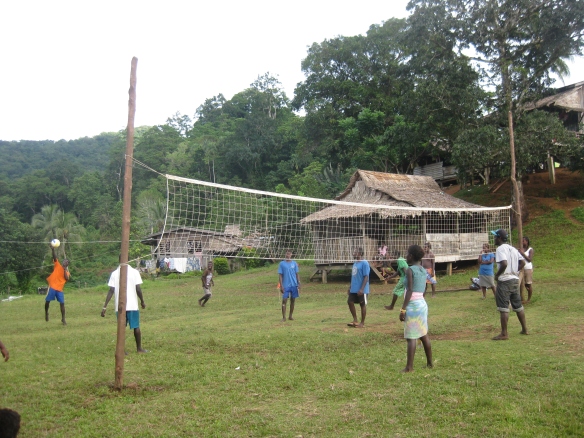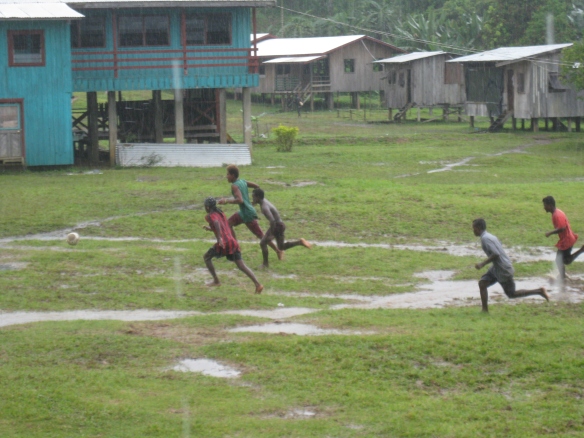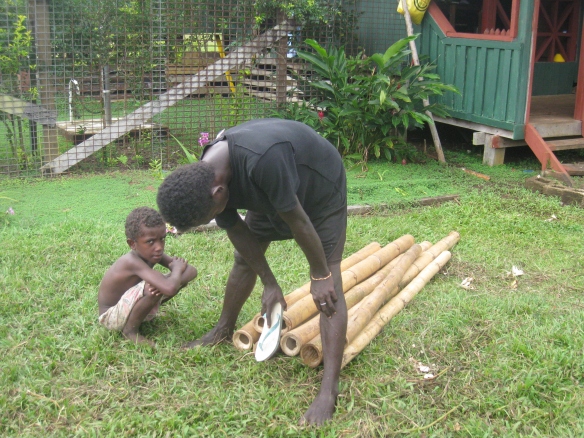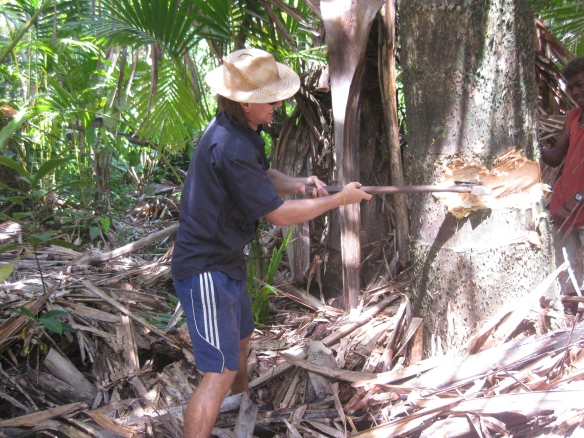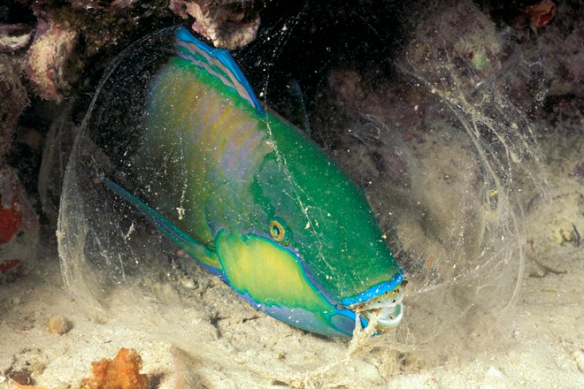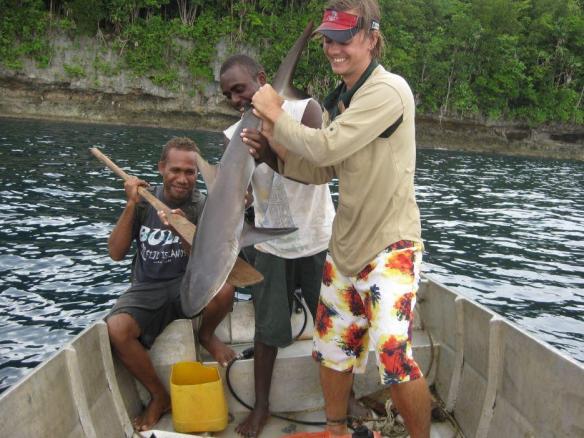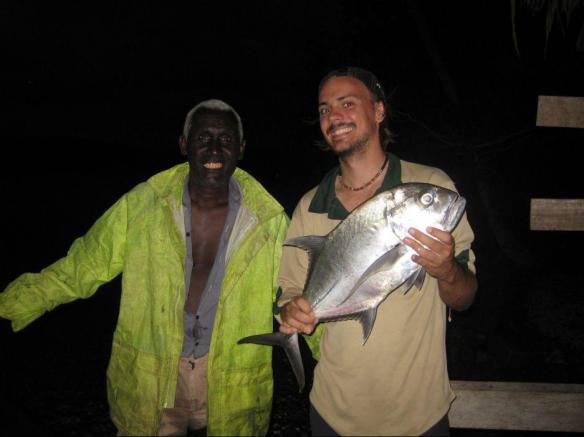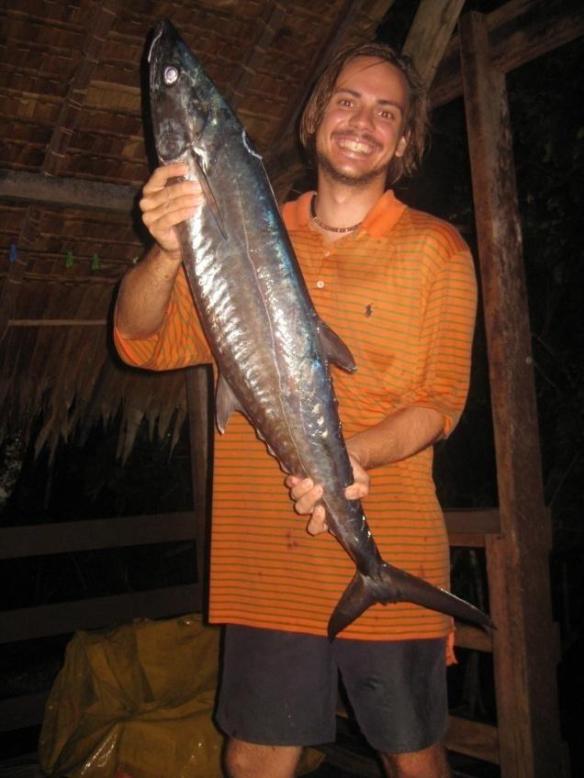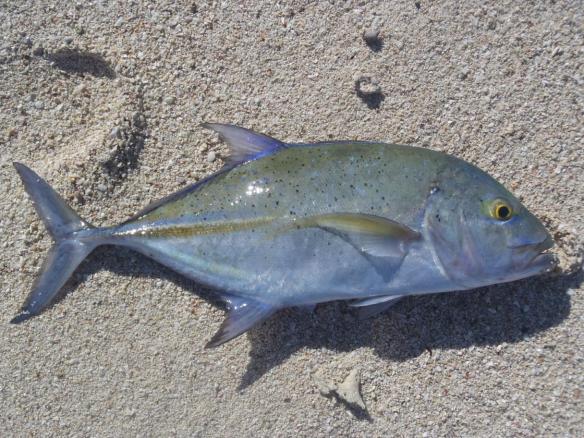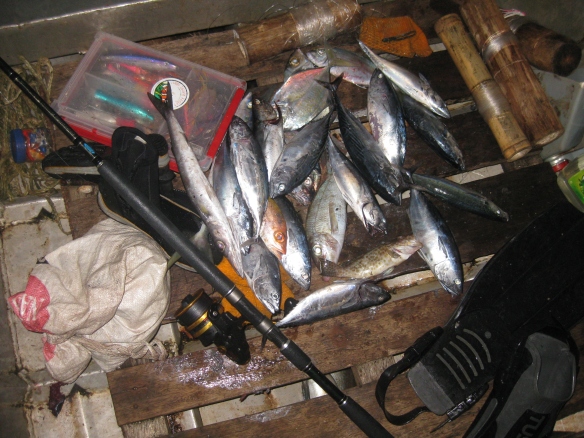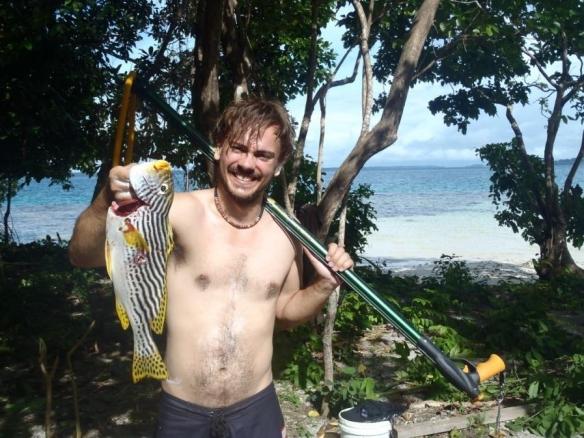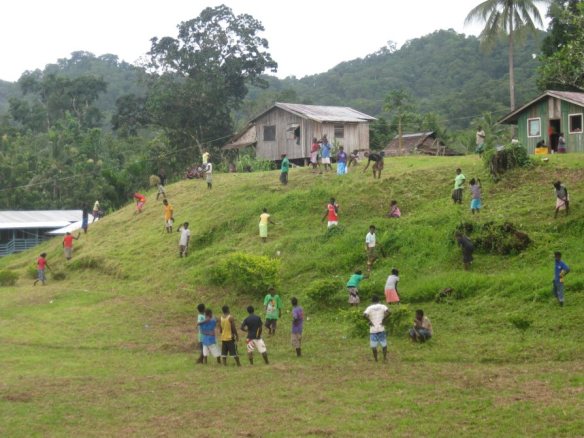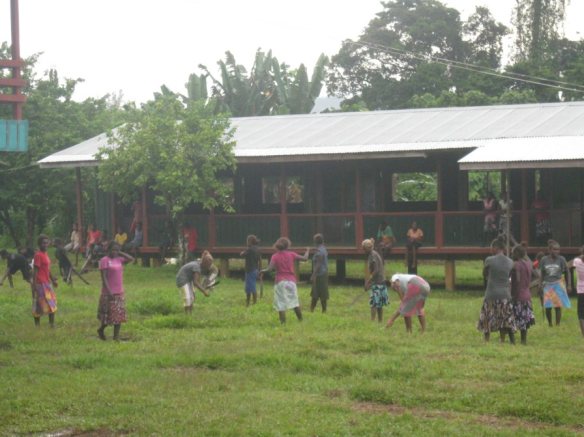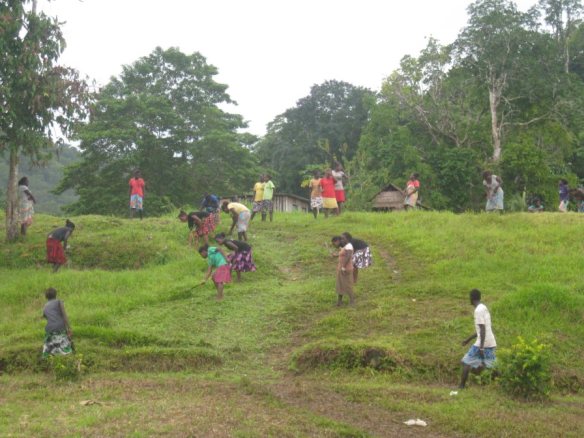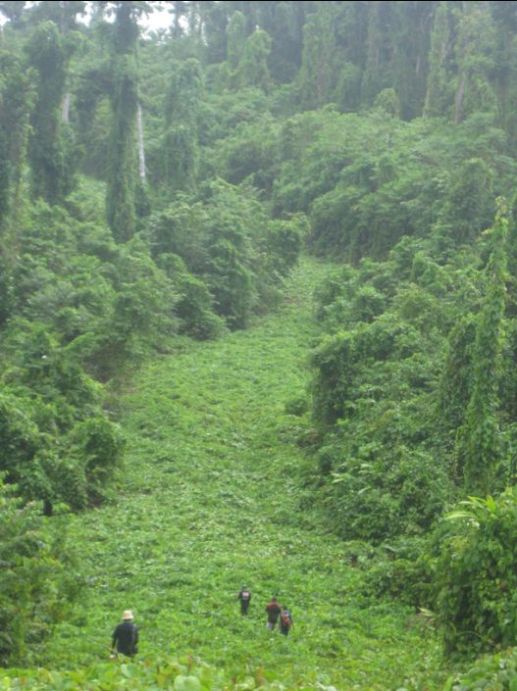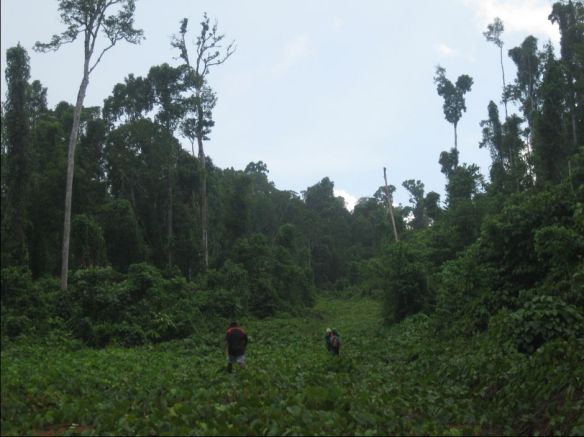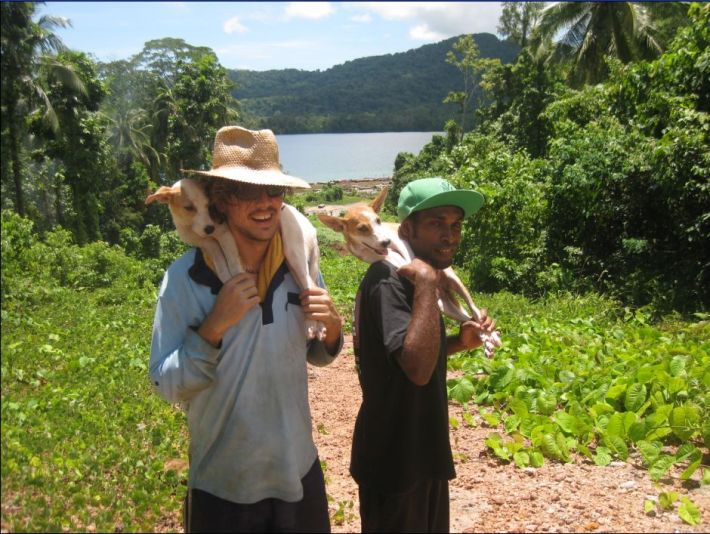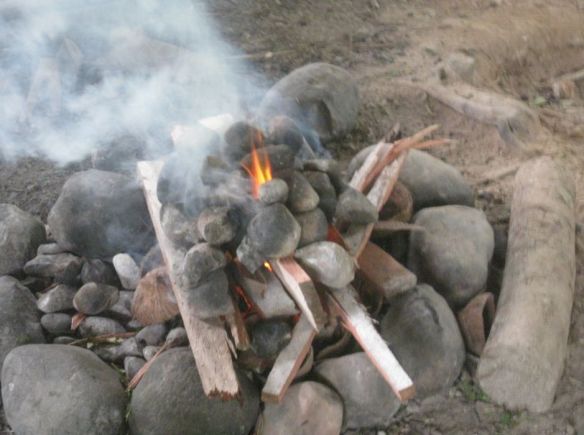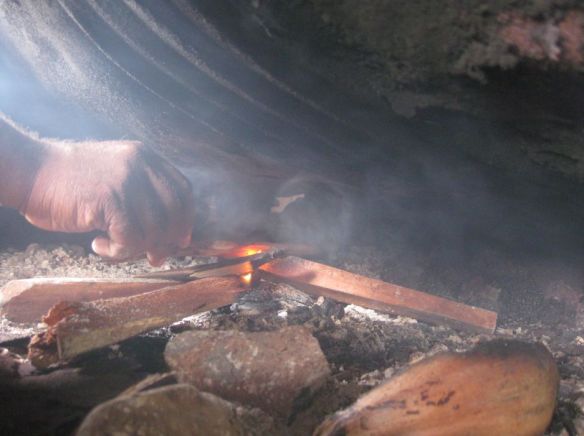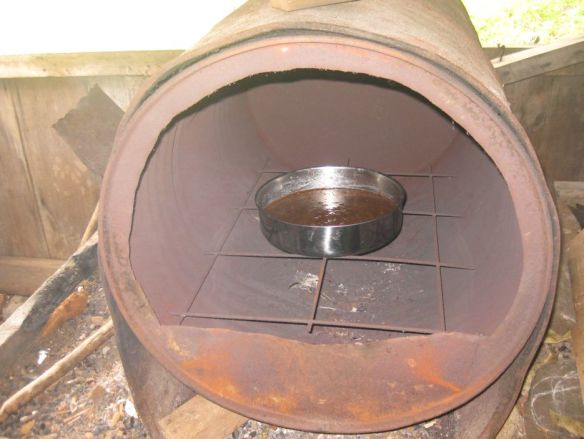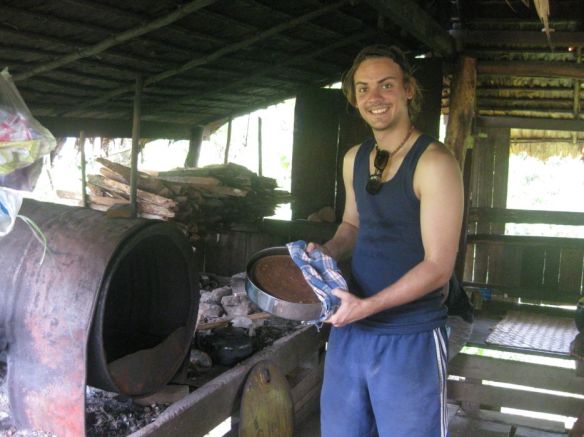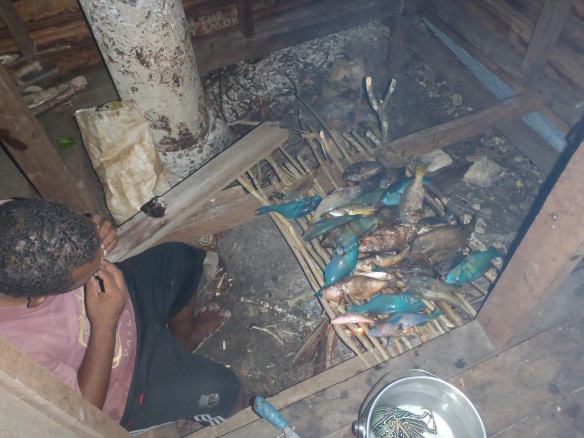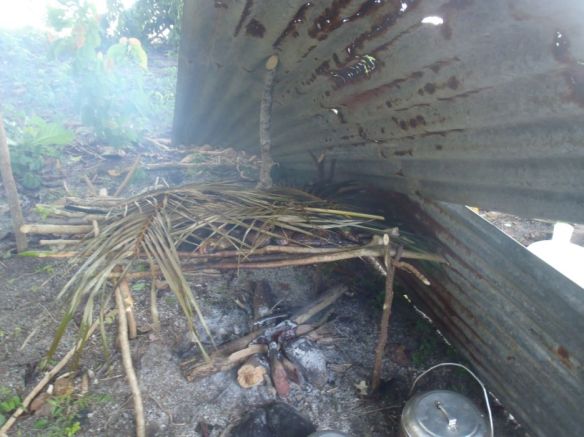Hi all. This is a post that I wrote about 2 months ago, but because of the effects of a very big storm, I never got the chance. Storms are relatively infrequent here in the Marovo; 95 percent of the storms that do occur follow the north easterly ocean breeze. It is storms in the 5 percent category that come from the south west that cause all the trouble. In my case, trouble was serious and expensive damage to the community internet modem and routers. It was quite depressing really, as I was just on the verge of closing a new deal that would sustain the community network for another 24 months.
In a bizarre comedy of catastrophes, this storm came 24 hours within me losing my fourth mobile phone to the ocean and the carbon filter and radiator of the town’s generator seizing. So not only was I incommunicado for about 6 weeks, I was also inilluminato (I just made that word up, but it does sound very roman).
Not all things were doom and gloom. In many ways it was a good thing that this storm occurred at the end of my project rather than the beginning, because I feel I was definitely more equipped to deal with being taken ‘off the grid’. These are some of the things I did to keep myself busy.
1. Organise regular volleyball, netball and soccer games for the students and community members.
This is actually something I have been doing all year, but during ‘the long dark’, games were much more regular and important. This is because trying to supervise 450 teenagers without the aid of light is like trying to dam a river with sand. Before I came, the students’ participation in sports was limited exclusively to the older boys. At the end, there was multiple games of volleyball, netball, soccer and sometimes rugby (teaching the offside rule is a nightmare!) happening, I think the student population, as a whole, became much more content. There also was a bit of culture shock happening with the girls starting to get more involved and not taking any rubbish from the boys, which was good to see.
Of course, I got heavily involved in most games. I was a rubbish soccer player, but I blame that on the field that had mud craters bigger than Flanders during WW1. In volleyball, netball and touch rugby, however, I held my own. Channeling Pat Rafter worked pretty well for me
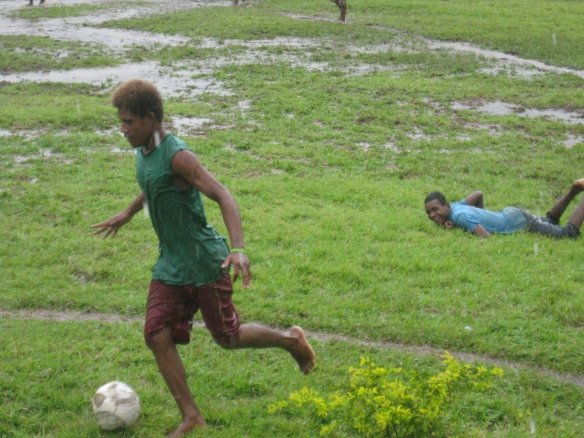
2. Shooting things with my spear gun
What can I say, small things amuse small minds. In darker times, when my rat problem was really getting out of hand, I even reverted to taking pot shots in the house. I regret doing that. I also tried to shoot coconuts off trees, but the gun’s three metre range usually wasn’t long enough.
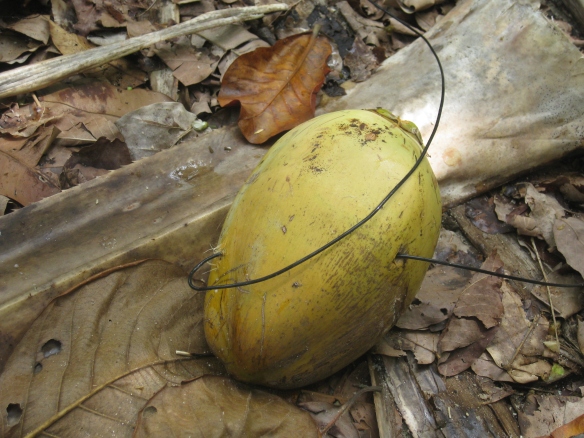
3. Taking idiotic photos of my dogs
Kipper, Cassy, Wipu and Rosa keep me amused by being rascals.
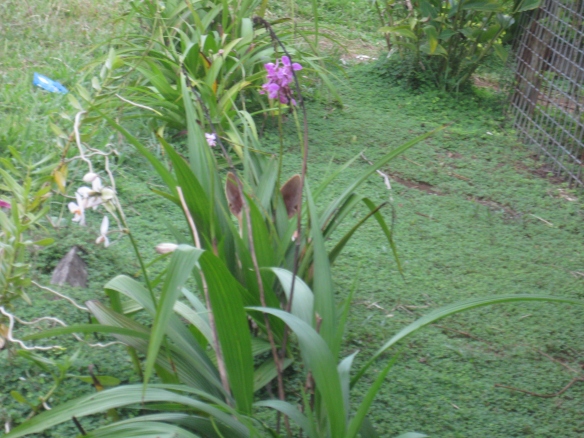
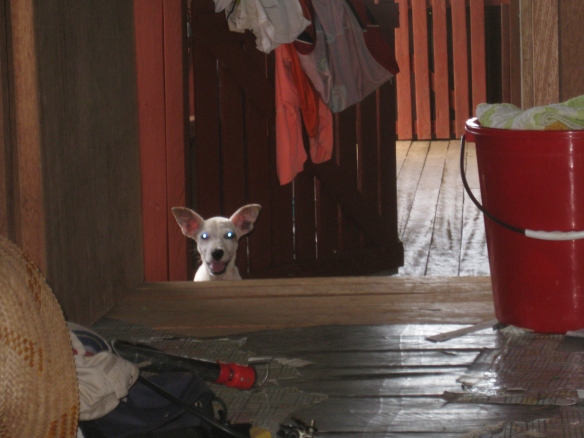
4. Make bamboo instruments and form a heavy bamboo band
I have always wanted to form a Rage Against the Machine tribute band and to be honest, at 26, I was starting to doubt my resolve. With all the extra time I had, Rage Against the Bamboo finally was formed. It is no secret to anyone that knows me that I am hopelessly tone deaf, so I required a bit of help matching the bamboo sounds to guitar keys. Upon completion, there was two instruments with A, G, C, E, and F notes. All band members were given printed lyrics to ‘know your enemy’ and were taught the art of thrashing. Unfortunately, we never got to record the final product, but I like to think that somewhere in the Marovo there are kids combining the happy sounds of bamboo music to lyrics like :
Yes I know my enemies
They’re the teachers who taught me to fight me
Yeah compromise, conformity, assimilation
Submission, hypocrisy, brutality, the elite
5. Joke around
The kids of the Marovo have a great sense of humour. It takes a little getting used to as there is no shortage of slap stick; laughing at the expense of others is considered fair game and good fun. I can remember being slightly upset when the whole crowd started laughing at the scene where the monkey gets killed in the Life of Pi. Still, to be fair, there is a lot I don’t understand about their humour. Another thing is, when a Marovo person laughs, they REALLY laugh. It is loud, high pitched and highly infectious. Exchanging my sarcasm for Marovo frankness has been probably one of the most rewarding cultural exchanges I have been involved in.
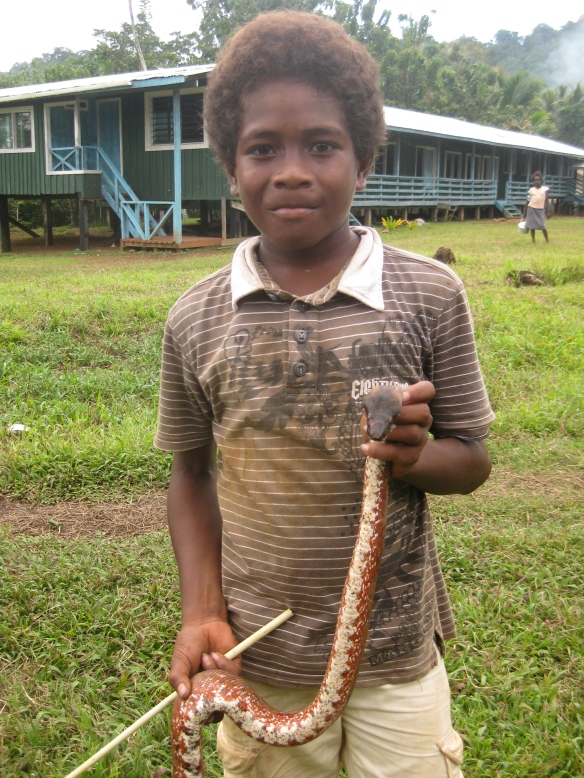
This little fella was greatly amused at my high pitched screams when he placed a dead snake on my doorstep one morning.
6. Getting spaka with the boys
Chewing beatle-nut is a full-time occupation here in the Marovo (excluding SDA church goers). I am not really a fan of the red teeth or the nutty aftertaste, but I can see its appeal when there is nothing else to do. Beatle nut is relatively harmless when chewed on its own or with a korokua fruit or hirata leaf. When the korokua fruit is dipped in lime; however, there is a chemical reaction that gives you a strong headspin. The lime itself is created by drying, burning and crushing dead binubinu coral (orange branch coral with blue or green tips). If you ever get the chance to try it, my advice would be to avoid getting it on your gums and don’t swallow the juice as it can give you ulcers. As a side note, beatle-nut and alcohol is a potent mix and not recommended for anyone who is not a spaka masta.
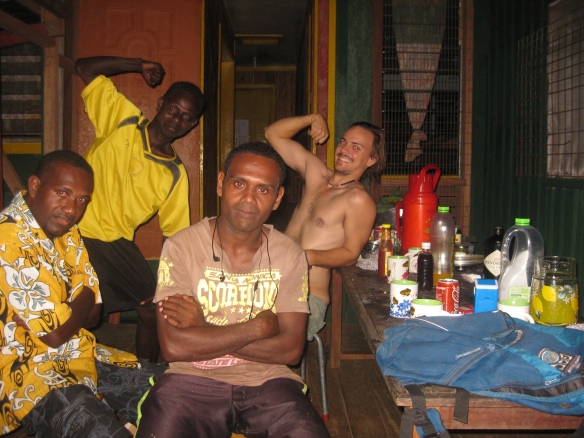
7. Work in the community garden
Life in the village isn’t all sitting about. Providing a regular source of greens (beans, slippery and Chinese cabbage), fruit (bananas, pineapples and pawpaws) and root vegetables (potatoes, kumara, taro and cassava) is a full time job. To get everything done, the community is divided into the work groups of root crops, soup soup garden (village greens), bush clearers, firewood and sagu palm finders and grass cutters. The workdays are Monday, Tuesday and Thursday afternoons (for about an hour) and groups are thankfully rotated every two weeks. I found that working in the root crops section was the hardest, but with a limited garden tools, the work is shared around.
8. Go for a paddle and a fish
During the week, I tried to take Munjiki Vua (crocodile bait) out for a spin as often as I could. I never did catch anything on these trips, but it was good exercise and every now and again I would something really strange. One day, for example, I saw an eagle attack and catch a small bilikiki bird. That was pretty epic.
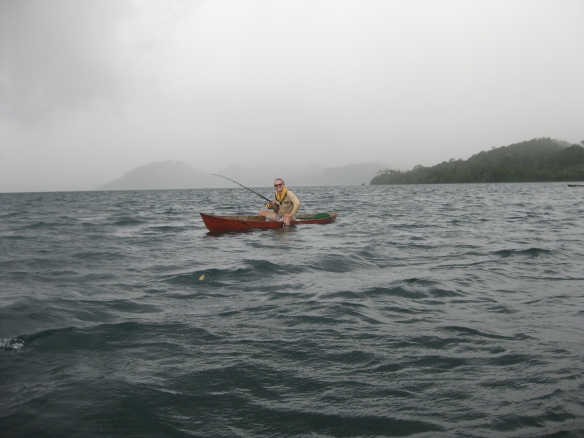
There is a big storm in the background that gave me a lot of trouble paddling back. Munjiki Vua was a fast canoe, but leaked like a siv.
9. Movie Night
Even though the generator has been out of action, it was lucky that the solar system at Patukae could support a projector and speakers. This was an opportunity for me to unashamedly indoctrinate the kids and the community members in my strange tastes of politics and popular culture; one that I have really enjoyed. The biggest hits so far have been: David Attenborough’s Blue Planet series, The Blues Brothers, Rambo first blood, Predator, A life of Pi and the Lord of the Rings and the original Star Wars trilogies. I get quite a kick out of explaining ‘the force’ or back stories of the Lord of the Rings to the unenlightened. A lot of the smaller children apparently had nightmares after watching The Thing and the ‘sinister influence of movies on our youth’ was a popular topic for preaching in some church services, but you can’t win them all.
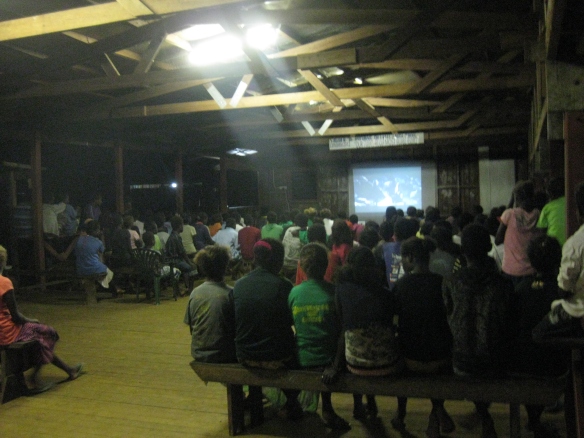
10. A lot of reading and writing
Discounting writing rambling posts for this blog, I have enjoyed writing short stories and the occasional article. Ironically, the short stories I have written are quasi horror/science fiction stories, which I guess is a little weird (mimicking the main character of 1988, although not too much I hope). I most proud of the ‘The blood transfusionist’ and ‘the lost island’. The articles are a tad more politically charged and I haven’t decided what to do with them. It is good practice, nevertheless.
Thanks to my trusty kindle, I have just finished reading my 87th book. My reading tastes are just as off-beat as my writing tastes. I now have a fair understanding of Richard Nixon, Malcom X, the Argentinian Junta of the 1970’s, Espionage techniques during the Cold War, the Science of Star Trek and Admiral Yi Sun Sin. My top three most enjoyable reads have been:
1. The Great Shark Hunt – Hunter S Thompson
2. Catch 22 – Heller
3. A Memory of Light – Brandon Sanderson and (epic sci-fi is pulp, but I love it)
It has been around 4 years since I have started The Art of Motorcycle Maintenance, but I am nearly finished.

